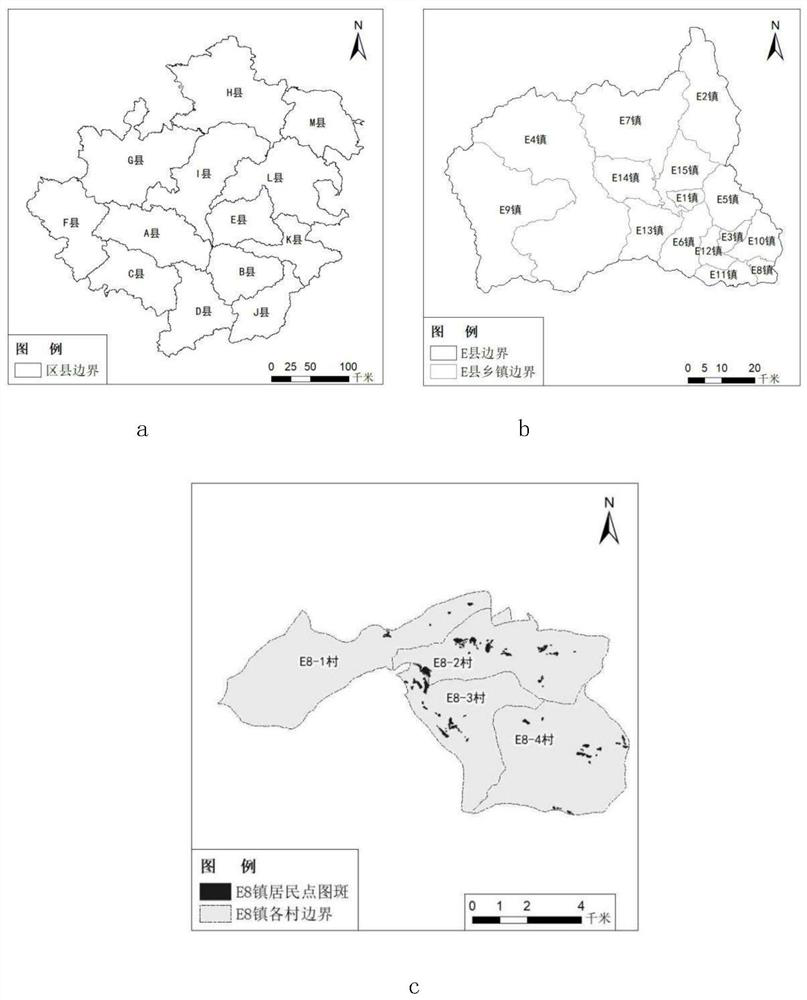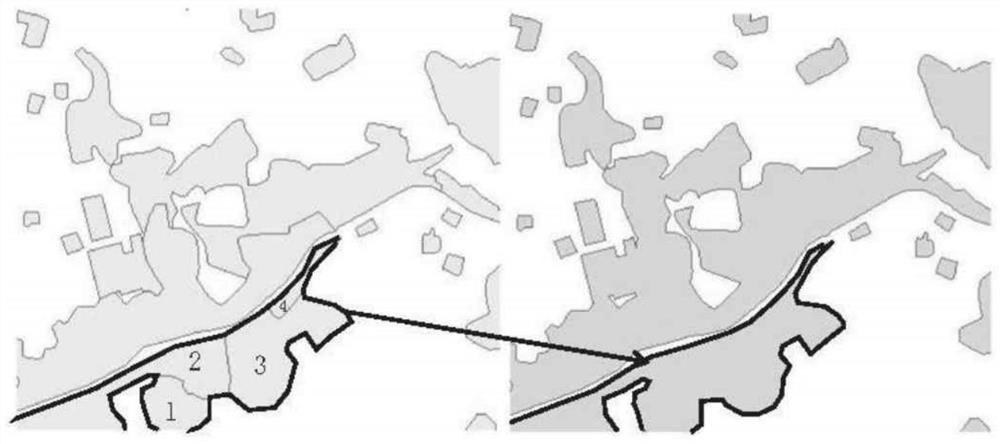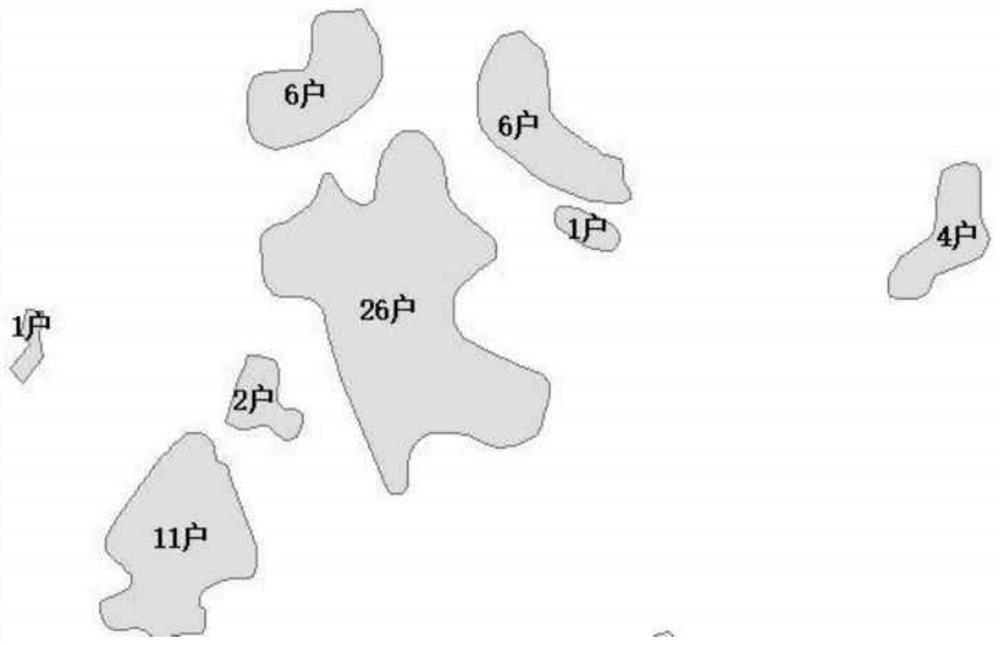Gathering area identification and division method for rural domestic sewage treatment
A domestic sewage and rural technology, applied in the direction of general water supply saving, data processing applications, instruments, etc., can solve the problems of high vegetation coverage, complex terrain conditions, quantitative remote sensing is not suitable for rural residential area identification, etc., to achieve strong operability , environmental quality improvement, and the effect of authentic and reliable data sources
- Summary
- Abstract
- Description
- Claims
- Application Information
AI Technical Summary
Problems solved by technology
Method used
Image
Examples
Embodiment 1
[0044] This embodiment identifies and divides the rural settlements in County E of a certain city:
[0045] (1) Basic data preparation. The main data used are: land geographic data, geospatial data cloud data, rural population data, and remote sensing image data. National land geographic data, derived from the latest national land survey data, are mainly used to obtain the distribution of rural residential areas and make supporting township (town)-village administrative boundaries; geospatial data cloud data, using the 30-meter digital data of geospatial data cloud data Elevation data, obtain DEM data, and then generate terrain and landform data, and obtain the distribution characteristics of rural settlements on different terrains and landforms such as valleys and mountains; rural population data comes from statistical yearbooks; remote sensing image data (the last two years and above level 16) Sourced from image tools such as Google Earth and Tiandi, it is used to verify th...
PUM
 Login to View More
Login to View More Abstract
Description
Claims
Application Information
 Login to View More
Login to View More - R&D
- Intellectual Property
- Life Sciences
- Materials
- Tech Scout
- Unparalleled Data Quality
- Higher Quality Content
- 60% Fewer Hallucinations
Browse by: Latest US Patents, China's latest patents, Technical Efficacy Thesaurus, Application Domain, Technology Topic, Popular Technical Reports.
© 2025 PatSnap. All rights reserved.Legal|Privacy policy|Modern Slavery Act Transparency Statement|Sitemap|About US| Contact US: help@patsnap.com



